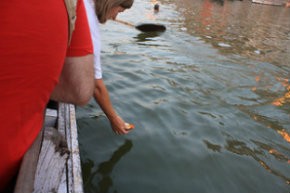Falling into prayer: Bede Griffith's pilgrimage and mine

I’d only just turned 20 but thought of myself as much older than my peers, who unlike me had actually listened to the advice of their elders. This meant that while I’d been working full-time to get my husband through college, they’d been happily matriculating at prestigious campuses around the country. I consoled myself with the notion that, unlike them, I was an adult. And that my time would come, which finally it did.
I enrolled at the local city college and arrived on campus on day one as thrilled as a freshly scrubbed first-grader, energized by the semiguilty thought that my real life, or rather that cluster of potentialities that lay like a vein of unmined ore somewhere deep inside me, was finally about to reveal itself. Who would I turn out to be? Though I had assumed I would discover this when I became a grown-up (one of the reasons I’d found the supposed emancipation of teenage marriage so compelling), so far I didn’t have a clue.
My first class was biology. The professor, reedy and earnest and not much older than the rest of us, announced that we would not, as I had expected, be studying mitosis, but rather something he called “environmentalism.” It was 1972, and Planet Earth was in peril, he said; if our habits did not change dramatically, within 35 years we’d be coping with the harbingers of an environmental apocalypse.




